#What is Frontend Development
Explore tagged Tumblr posts
Text
#What is Full Stack#What is Frontend Development#Front End Development Skills#What is Backend Development#Backend Development Skills#Who is a Full-Stack Developer#Salary of Full Stack Developer#Full Stack Development Course
1 note
·
View note
Text
#agile development#backend development#conclusion#continuous deployment#continuous integration#deployment#designing#DevOps#DevOps engineer#documentation#FAQs#frontend development#introduction#lean development#maintenance#product manager#Programming Languages#quality assurance engineer#requirement analysis#scrum master#software development#software development jobs#software development life cycle#software engineer#test-driven development#testing#types of software development#user documentation#what is software development
0 notes
Text
Non-techical people making technical decisions is how you get 6× as many developer hired to write the frontend website code as the number of developers in the entire infrastructure team.
#codeblr#progblr#then when velocity is slow they hire another frontend developer#you know how little you value ux designers?#you should value frontend developers that much#thats how many you need to hire#also value ux more my guy#its actually good if blind people can use your website#even though it makes features come out “slower” and you cant see what changed in the website#your team should comprise of mostly backend developers#i say frontend but technically were “fullstack” developers#my hot take is that “fullstack” is just a fancier word for frontend#we write javascript and just enough of the serverside to call the apis/libraries that the real backend developers write#“Fullstack” “engineer” lmao gimme a break#That said “fullstack senior engineer” is definitely on my resume
1 note
·
View note
Text
#web development#web developers#html5 development#html css#html tutorial#html tags#html5games#htmltraining#htmllearn#people are only just realising what html stands for and they’re baffled#frontend
0 notes
Text
Backend for Frontend Design Pattern for Microservices Explained with Examples
Full Video Link https://youtu.be/CRtVz_kw9qA Hello friends, new #video on #backendforfrontend #bff #designpattern for #microservices #tutorial for #api #developer #programmers with #examples are published on #codeonedigest #youtube channel
In this video we will learn about Backend for Frontend design pattern for microservices. Backends for Frontends (BFF) is a microservice design pattern to handle the complexity of client-server communication where we have multiple user interfaces. This pattern suggests having a separate back-end service for each frontend to handle the specific needs of that interface. This pattern allows…

View On WordPress
#backend for frontend#backend for frontend (bff) pattern#backend for frontend design pattern#backend for frontend developers#backend for frontend microservices#backend for frontend pattern#backend for frontend pattern example#backend for frontend pattern vs api gateway#backend for frontend python#backend for frontend tutorial#bff pattern#microservices#microservices architecture#microservices tutorial#system design#what are microservices
0 notes
Note
A wee curiosity ( feel free to delete if this sounds rude, I absolutely don't mean for it to be at all) : In your article, you refer to Archive Of Our Own as "the AO3" ( rather than simply "AO3") and I was just wondering about the linguistics of it? Why add "the" to it?
Haha don't worry, it doesn't sound rude! A lot of folks back in the day called it "the AO3" and some still do. For example:
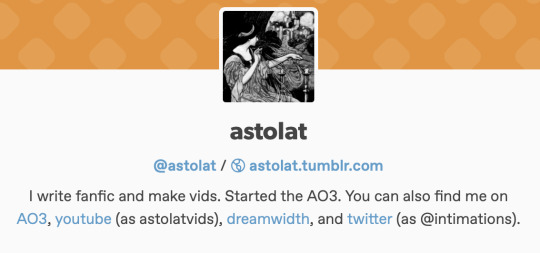
I use "the AO3" and "AO3" somewhat interchangeably, though I know from editing many Fansplaining transcripts that both Flourish & I are more likely to say the former than the latter aloud. (The) AO3 itself uses both on their FAQ! They also use "the Archive," which I use a fair amount in journalism (e.g., this piece I reported ~5 years ago on their frontend development), because you have to mix things up a bit when you're constantly referencing the same thing. :-D
I have actually noticed the article "the" vanishing before organization acronyms over the past decade, and it's jarring to me—radio reporters talking about "EPA's fight at the Supreme Court" or whatever. It makes me think of the creeping brand-ification of language overall—see one of my most beloathed examples, Apple's policy of just calling it "iPhone":

So maybe it's because I'm always thinking of "the AO3" as "the Archive," a thing on which you post and read, and not "AO3" which feels more like a brand? I mean, in reality I'm not giving this that much thought—it's just a long-held habit! Clearly I am not a linguist, because I don't have the language to explain what's happening here—and also because linguists find language changes fun, and I'm sitting here grumbling at Tim Cook, "It's THE iPhone!!"
55 notes
·
View notes
Text
Me: Johnny o'mara is such a fun player, I wonder what other podcasts he's on. Let's see his website.
Johnny's website: Hi! I'm Johnny. I'm a fullstack web developer, with a frontend focus.
26 notes
·
View notes
Text
In the near future one hacker may be able to unleash 20 zero-day attacks on different systems across the world all at once. Polymorphic malware could rampage across a codebase, using a bespoke generative AI system to rewrite itself as it learns and adapts. Armies of script kiddies could use purpose-built LLMs to unleash a torrent of malicious code at the push of a button.
Case in point: as of this writing, an AI system is sitting at the top of several leaderboards on HackerOne—an enterprise bug bounty system. The AI is XBOW, a system aimed at whitehat pentesters that “autonomously finds and exploits vulnerabilities in 75 percent of web benchmarks,” according to the company’s website.
AI-assisted hackers are a major fear in the cybersecurity industry, even if their potential hasn’t quite been realized yet. “I compare it to being on an emergency landing on an aircraft where it’s like ‘brace, brace, brace’ but we still have yet to impact anything,” Hayden Smith, the cofounder of security company Hunted Labs, tells WIRED. “We’re still waiting to have that mass event.”
Generative AI has made it easier for anyone to code. The LLMs improve every day, new models spit out more efficient code, and companies like Microsoft say they’re using AI agents to help write their codebase. Anyone can spit out a Python script using ChatGPT now, and vibe coding—asking an AI to write code for you, even if you don’t have much of an idea how to do it yourself—is popular; but there’s also vibe hacking.
“We’re going to see vibe hacking. And people without previous knowledge or deep knowledge will be able to tell AI what it wants to create and be able to go ahead and get that problem solved,” Katie Moussouris, the founder and CEO of Luta Security, tells WIRED.
Vibe hacking frontends have existed since 2023. Back then, a purpose-built LLM for generating malicious code called WormGPT spread on Discord groups, Telegram servers, and darknet forums. When security professionals and the media discovered it, its creators pulled the plug.
WormGPT faded away, but other services that billed themselves as blackhat LLMs, like FraudGPT, replaced it. But WormGPT’s successors had problems. As security firm Abnormal AI notes, many of these apps may have just been jailbroken versions of ChatGPT with some extra code to make them appear as if they were a stand-alone product.
Better then, if you’re a bad actor, to just go to the source. ChatGPT, Gemini, and Claude are easily jailbroken. Most LLMs have guard rails that prevent them from generating malicious code, but there are whole communities online dedicated to bypassing those guardrails. Anthropic even offers a bug bounty to people who discover new ones in Claude.
“It’s very important to us that we develop our models safely,” an OpenAI spokesperson tells WIRED. “We take steps to reduce the risk of malicious use, and we’re continually improving safeguards to make our models more robust against exploits like jailbreaks. For example, you can read our research and approach to jailbreaks in the GPT-4.5 system card, or in the OpenAI o3 and o4-mini system card.”
Google did not respond to a request for comment.
In 2023, security researchers at Trend Micro got ChatGPT to generate malicious code by prompting it into the role of a security researcher and pentester. ChatGPT would then happily generate PowerShell scripts based on databases of malicious code.
“You can use it to create malware,” Moussouris says. “The easiest way to get around those safeguards put in place by the makers of the AI models is to say that you’re competing in a capture-the-flag exercise, and it will happily generate malicious code for you.”
Unsophisticated actors like script kiddies are an age-old problem in the world of cybersecurity, and AI may well amplify their profile. “It lowers the barrier to entry to cybercrime,” Hayley Benedict, a Cyber Intelligence Analyst at RANE, tells WIRED.
But, she says, the real threat may come from established hacking groups who will use AI to further enhance their already fearsome abilities.
“It’s the hackers that already have the capabilities and already have these operations,” she says. “It’s being able to drastically scale up these cybercriminal operations, and they can create the malicious code a lot faster.”
Moussouris agrees. “The acceleration is what is going to make it extremely difficult to control,” she says.
Hunted Labs’ Smith also says that the real threat of AI-generated code is in the hands of someone who already knows the code in and out who uses it to scale up an attack. “When you’re working with someone who has deep experience and you combine that with, ‘Hey, I can do things a lot faster that otherwise would have taken me a couple days or three days, and now it takes me 30 minutes.’ That's a really interesting and dynamic part of the situation,” he says.
According to Smith, an experienced hacker could design a system that defeats multiple security protections and learns as it goes. The malicious bit of code would rewrite its malicious payload as it learns on the fly. “That would be completely insane and difficult to triage,” he says.
Smith imagines a world where 20 zero-day events all happen at the same time. “That makes it a little bit more scary,” he says.
Moussouris says that the tools to make that kind of attack a reality exist now. “They are good enough in the hands of a good enough operator,” she says, but AI is not quite good enough yet for an inexperienced hacker to operate hands-off.
“We’re not quite there in terms of AI being able to fully take over the function of a human in offensive security,” she says.
The primal fear that chatbot code sparks is that anyone will be able to do it, but the reality is that a sophisticated actor with deep knowledge of existing code is much more frightening. XBOW may be the closest thing to an autonomous “AI hacker” that exists in the wild, and it’s the creation of a team of more than 20 skilled people whose previous work experience includes GitHub, Microsoft, and a half a dozen assorted security companies.
It also points to another truth. “The best defense against a bad guy with AI is a good guy with AI,” Benedict says.
For Moussouris, the use of AI by both blackhats and whitehats is just the next evolution of a cybersecurity arms race she’s watched unfold over 30 years. “It went from: ‘I’m going to perform this hack manually or create my own custom exploit,’ to, ‘I’m going to create a tool that anyone can run and perform some of these checks automatically,’” she says.
“AI is just another tool in the toolbox, and those who do know how to steer it appropriately now are going to be the ones that make those vibey frontends that anyone could use.”
9 notes
·
View notes
Note
Hi there, Love your work! I'm also doing stuff in Unreal and it feels like it's rarer to find other indie devs using it. I love how clean all your UI feels, and UI is something I seem to really struggle with.
Do you have any recommendations for workflows / tips / sources etc for getting better at UI?
Also I'd love to know more about the material / shader workflow for your latest post if you have more information anywhere.
Thanks :)
Hello there! Thank you!! I hope you don't mind me answering publicly as I feel like some people might be interested in the answer!
I really appreciate your UI (User Interface for those not knowing the acronym) compliment as it's something I've spent a long time working on and specializing in, in my career as a software engineer. UI/UX often goes completely unacknowledged or taken for granted even though it takes a lot of time and hard work to create and develop. In the engineering world I frequently had to advocate for and explain user experiences to those who didn't have as deep of an appreciation for UI or a very sophisticated understanding of why a good, visually appealing user experience makes, or on the flip side, can break everything. I think it's a very challenging, overwhelming topic to grasp and communicate, but just by being interested in it you're already way ahead!
There's a lot going on with UI. From visuals to knowing common design elements to successfully conveying a story to the user to implementation to testing to designing for accessibility to animation and I probably didn't cover everything with that run-on sentence. There's frontend engineers out there whose role is solely to maintain and improve UI component libraries for companies. And that's without throwing games, whose UIs are all uniquely visually tailored to their experiences, into the mix... I could keep going on about this honestly, but I'll get to what I think you can do personally! 1. Learn about common design patterns. What's a toast? What's pagination? What's a card? Little things like that. These apply to all software UI/UX, including video games- and knowing these off the top of your head will make it so much easier for you to invent your own UI designs and patterns.
2. Study the UI in the everyday applications you interact with. Step through menus and think about how you got from point A to point B. Take a moment to think about the why someone put a button where they did. Study the UI in your favorite video games, too! Take a lot of notes on what you think works really well and what you think doesn't. And also there's online resources that are great for inspiration. I personally spend a lot of time on the Game UI Database. - https://dribbble.com/ - https://www.gameuidatabase.com/ 3. Don't be afraid to start with basic sketches or even just simply representing everything with grey boxes. All my UI starts out as really crappy sketches on paper, or tablet sketches on top of screenshots. Visualize your ideas and then keep iterating on them until you've got something. For example, I went from this:
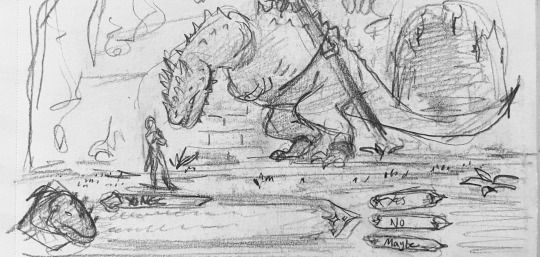

To this. (And come to think of it I might actually still want to make those cooler looking buttons in my sketch) 4. Break everything out into pieces and individual components. A good UI is made up of building blocks that you can reuse all over the place. That's how it stays consistent and also saves you a lot of stress when you need to go in and update components. Instead of a million different looking UI pieces, you just have to update the one! These individual components will make up your very own UI Component Library, which will be the standardized design system and source of reusable components for your project. This also applies to your visual elements that don't do anything (like I personally have a whole mini library of diamond and star shapes that I reuse everywhere).
For reference, here's a breakdown I made of my Inventory UI. On the right, I've labeled most of the individual components, and you might be able to see how I'm reusing them over and over again in multiple places.
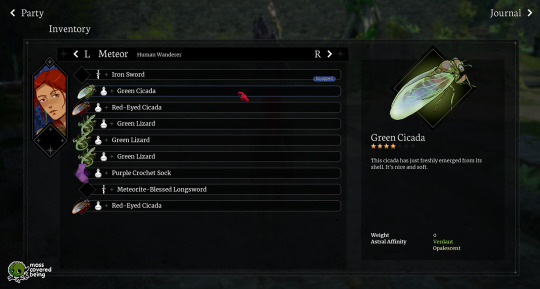
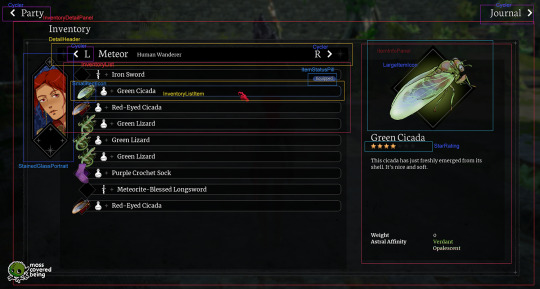
5. Spend some time listening to designers talk, maybe befriend some designers! Many of them have an unique, interesting view of the world and how we interact with it even beyond just software. Their perspectives will inform yours.
6. Test your UI on users whenever you can. Get feedback from others. This is the best way for you to see what works and what doesn't. As game devs we spend so much time with our games it's easy for us to lose sight of the full picture.
7. Be patient and don't give up. Continue to be open to expanding your knowledge. These UI skills take time to develop. I personally am still learning even after like 10 years of doing it. Coming up with the visual elements is very challenging for me and I spend a lot of time rearranging things in photoshop before I actually start coding anything at all in Unreal.
Whew, that was a lot, but I hope that gives you some thoughts and a place to start!
I don't have any posts out there about Blender/Unreal shader workflows right now, but I'll consider making another post sometime soonish. I appreciate you asking and you're welcome! :)
23 notes
·
View notes
Text
Whenever people complain about the long-overdue change from AAA games costing $60 to games costing $70 (which let's be real - they already did in some places back in the 2000's/2010s. Retailers with no nearby competition would sell wii games WAY above market value, all the time. Ask me how I know.) The common refrain is always that spending power is down (true.) and that most of the dev budget and profits aren't even GOING to the developers, the CEOs are just pocketing it (also true.) But it's also hard for me to care about those factors when the expectation for what a game should cost has been thrown out the window.
Sonic Adventure retailed at $60 in the U.S in 1998, which is about $115 in today's money, and it takes 9 hours to clear the whole story. Sonic Frontiers had a larger team, budget, development schedule, and despite the fact it has nearly double the amount of gameplay, it sold at almost half the price of Sonic Adventure. Adjusted for inflation.
When I was in middle school, it was understood that if a game was free, it was most likely made by someone on their free time, and therefore it would probably be short and simple. The mobile apps that were worth your time all cost 99 cents. This was a fee people were willing to pay, because a song on iTunes also cost 99 cents. Games with microtransactions were already taking advantage of gambling addictions, so people were willing to put up with a certain amount of adware on the free app market to avoid them.
Then everything went wrong at once. Free-to-Play video games were popping up all over the place with the amount of content you'd normally expect from the most ambitious AAA titles, and the content updates you'd expect to see from subscription-based MMOs to keep things fresh. Music could be streamed, so nobody wanted to spend 99 cents to own a copy of their favorite song anymore, and suddenly that fee looked too high for apps as well. Then Apple stopped pushing the paid apps, encouraging every developer to make apps that either monetized every corner with ads, or baited players into constant microtransactions so they'd be more than one-time sources of income. And despite being driven primarily by cynical profit motives, the leadership of most American AAA studios wanted to be compared to Hollywood. And so games are being pushed to look more like Movies. Photorealism. Cinematics. Stories that resemble the Movies. Stuff had to be more and more ambitious while costing less and less for the consumer on the frontend, sometimes in ACTUAL dollar amount and sometimes just adjusted for inflation, while also being designed to wring as much money out of every player as humanly possible. It's still going on like this and we all know it isn't fucking sustainable.
But sure. your DLC contains stuff you feel should have been in the base game now. The default price is $10 more - and once they've patched out as many of the issues they were forced to ship with as is realistically possible, you'll get what you paid for out of the experience.
You realize that if you get your reality where we have smaller games with worse graphics made by people paid more to work less, the price of heavily marketed, retail-worthy games will still probably go up, right? Because those likely won't go anywhere, even if they all start to look like what we think of as AA now rather than AAA. For a game to ACTUALLY cost $70 it'd need to maintain mass market appeal so it could sell enough copies to make back budget and probably fund the next dev cycle. Because in this world, game devs wouldn't be beholden to shareholder interests, right?
I'm not saying this to discourage you from that way of thinking in the slightest. I'm just pointing out that, as with SO many things in our lives, your sense of what something costs to produce is incredibly divorced from reality because of just HOW exploited the labor behind it is.
But to be completely honest, if an extra $10 on the base price of SOME PS5 games is enough of a stumbling block for you, I don't know how you'll handle the value for that money decreasing, as well.
12 notes
·
View notes
Text
#What is Backend Development#Who is a backend developer#Frontend vs Backend#Backend Developer Skills#Salary of Backend Developer#Backend developer course
1 note
·
View note
Text
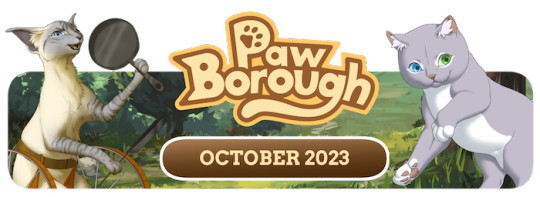
Hey all!
Happy 1 year anniversary to the launch of our Kickstarter! Meow! We just can't believe it. The project has grown and matured immensely since its inception, and with the hard work of the team it's become something amazing!
We know that for a monument this big, it's expected to see a big update; something which immortalizes our accomplishments.
We are working on a HUGE November drop!
November celebrates our funding milestone, so we'll be going all out! This update is business as usual. But brewing under the surface of our team… we are preparing something grand.
New Fauna
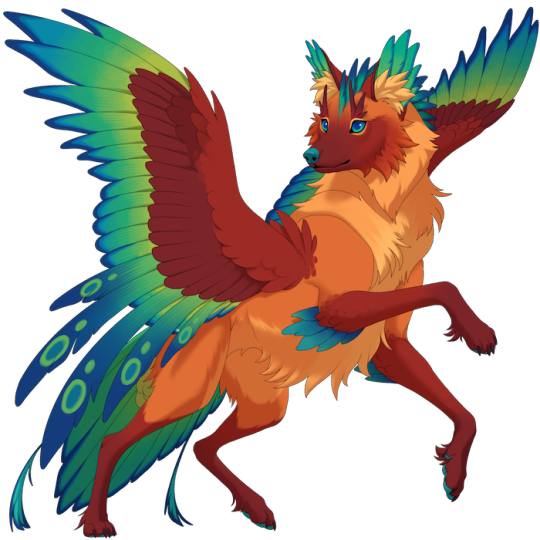
Sponsored and concepted by Apollo, designed and illustrated by Hydde
A wonderful backer-sponsored design!
*Name is not final
New Gene
Speaking of backer sponsored assets, we have finished rendering a gene sponsored for our game:
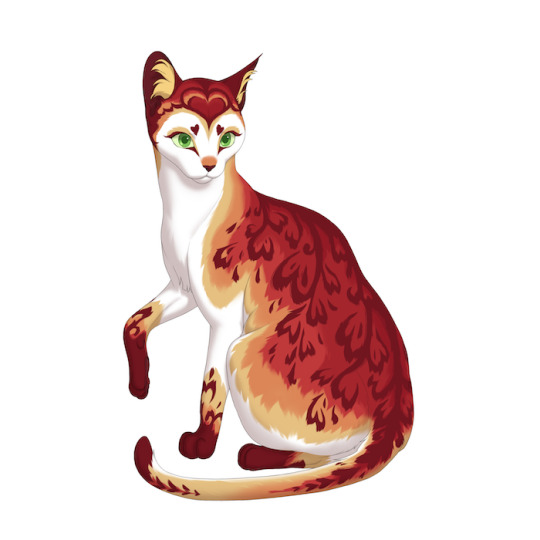
Sponsored and concepted by Venex, final design and illustration by Fulemy
Here are a few color previews!
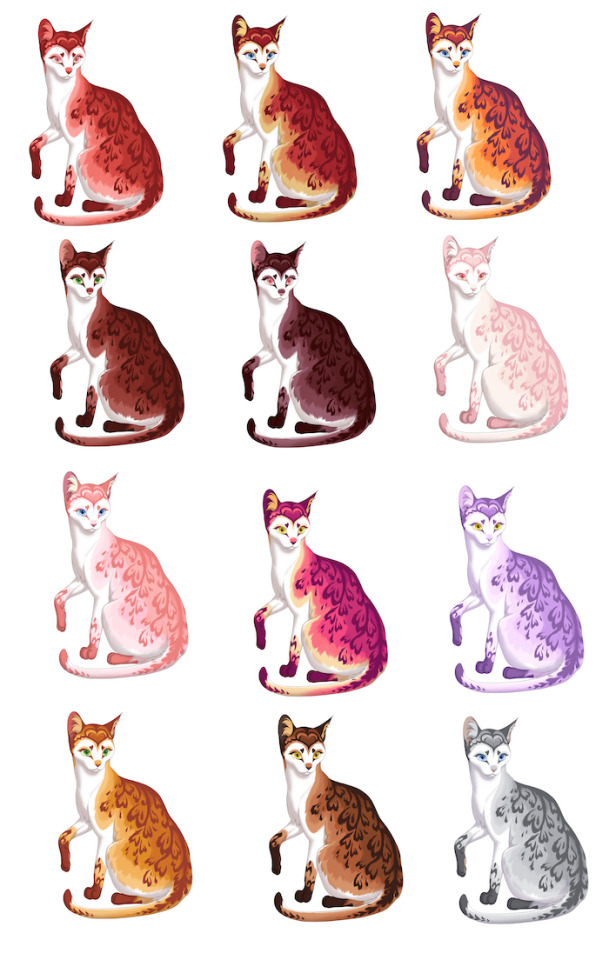
Hawthorne, Apple, Daybreak, Radish, Beetroot, Lily, Peony, Dragonfruit, Catmint, Fire, Flame, and Silver
Aaaaand we are working on translating Overgrowth! Check out this ivy version!
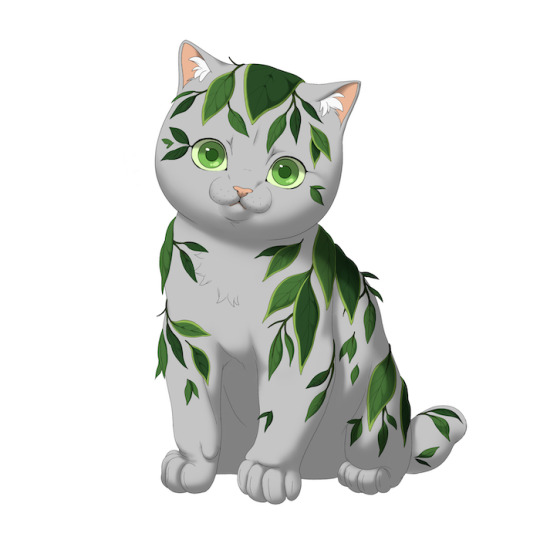
Illustrated by Remmie
New Backdrops
It's a great month for environmental art!
Harvest Outskirts
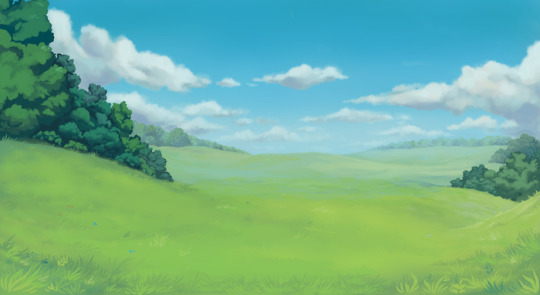
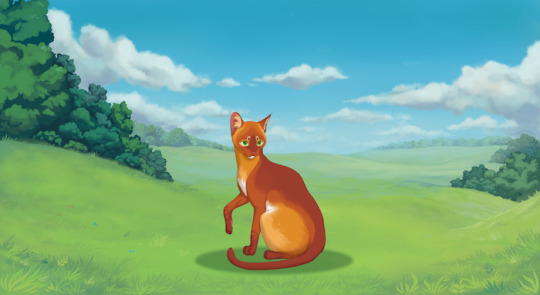
Illustrated by Jerso
Zenith Outskirts
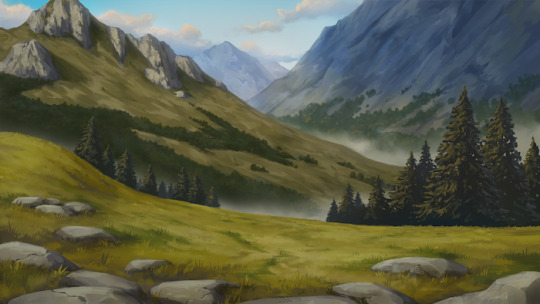
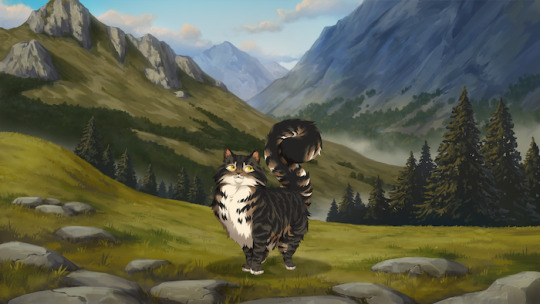
Composition by Runeowl, illustrated by Jacksonjoker
Luna Outskirts
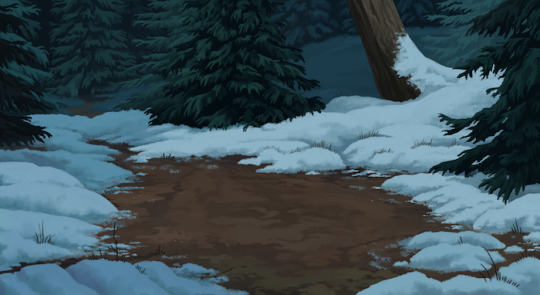
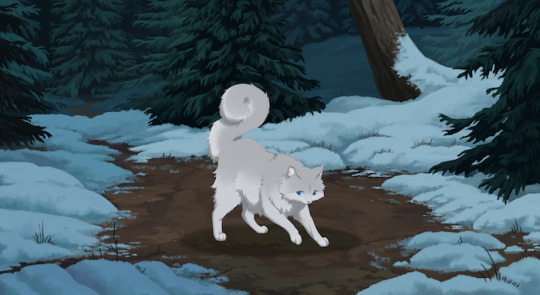
Illustrated by Harriertail
And that's it for this time around!
Mechanic Updates
We've completed the backend for:
Item storage and item "safekeeping" mechanic
Daily hunting party duties (item gathering) and cat-dependent advantages in daily activities
Customize and dress-up for a cat
We also built the item card and accessory preview functionality on the frontend!
Frontend designs for all of these mechanics are done, it's onto frontend building! Once we wrap up this section of development, it's onto the Guild, cooking/crafting, and market mechanics! After which, the game will be in a playable state... wow!
To Summarize: We shared new fauna, backdrops, the new backer gene, a preview of Overgrowth, and an update on where we are in development.
What to expect next month: Something big...
87 notes
·
View notes
Text
I'm thrilled to share that I recently completed the SheCodes Basic workshop and earned my certificate! 🎉 This immersive online program provided such a great introduction to web development concepts and skills.
Over the workshop, I gained so much useful knowledge about HTML, CSS, and JavaScript. The hands-on coding challenges let me apply what I was learning in a practical way. I'm proud of all the web pages, interactions and animations I coded from scratch!
I'll be starting the SheCodes Plus where we'll dive deeper into HTML. CSS, JavaScript, Bootstrap and more! Although I still can't decide if I want to be a Frontend Developer or go the Fullstack way😑.
Here is a link to my final Basic project:
#software#css#100 days of code#software development#webdev#coding#codeblr#studyblr#progblr#programming#dotnet
78 notes
·
View notes
Text
3 Game/Coding Resources!
I wanted to put together a few resources I found for people who might be planning to make games, or might be looking to learn coding!
The first resource is for anyone looking to learn how to code, build a portfolio, and get Certifications:
This is something I've recently been using myself and I can attest that it is an excellent resource!! They have many different paths you can learn, and right now I’m on the Responsive Web Design Certification. You can learn HTML and CSS, in order to create responsive pages. It teaches you through projects, where it breaks down different parts of the coding language and shows you how to use it. Some projects are optional, and some you have to complete in order to earn your certification. Certification projects don’t have instructions, only a rubric of what the project needs to be able to do, but you can learn all those skills in the optional projects! They also have Javascript, Frontend Development, Information Security… the list goes on! The website is run by a really cool non profit. I definitely recommend giving it a try!!
2. The second is for game developers who are looking for background music:
@/茶葉のぎか (Nogika Chaba on twitter) makes some really awesome 8bit-sounding BGM! And a lot of it is free for commercial/non commercial use!!
Make sure to check the description (you can translate to your language) for their policies. Many of their videos are tagged #freeBGM, which if you check their Pixiv Fanbox terms of service (in the desc of each video, please do check it before you use it) states that you are able to use the music in commercial/non commercial works:
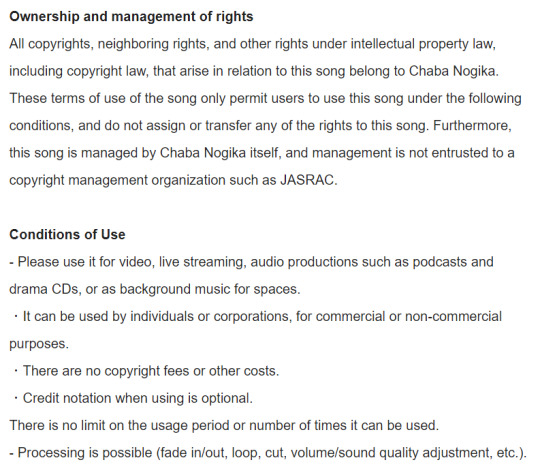
2. The third resource is for students:
Whether you're a university student, college, high school, or elementary, Github gives you free Github pro, as well as a curation of free offers! You do need a piece of student ID (proof that you indeed belong to an institution, eg. report card, student card, etc), but it has a host of offers. Microsoft offers free cloud training through this, there are multiple offers for learning a new coding language for free (eg. Codedex free 6-month subscription, which will also give you certificates once completed), you can get free domain names, the list goes on! If you are a student, I highly recommend that you give it a try, since it's 100% free!
#coding resource#game resource#coding#free#background music#if you have any other resources#let me know!!
18 notes
·
View notes
Text
They fired two of the UI developers yesterday (gave the notice the DAY OF) (2/2 UI developers, so there aren't any more of them in the team) and today in the team meeting they go 'we don't have a frontend developer hurr durr what if we plug in the design file into AI and make it generate the UI code for us hurr durr' and they were all laughing about it and I'm like. Never have I ever wanted to strangle someone through the screen so bad!!
4 notes
·
View notes
Text

Tuesday 12th December 2023
End of September: I quit my first proper tech job after 2 years.
End of October: I applied for university on a whim and got a place.
Start of December: Randomly got a new tech job without searching.
God blessing me left, right, and center?! That's just a summary of what's been happening the past few months. I will go into more detail below~!
Here are some tips for talking to people on LinkedIn: post 💕
If you're wondering how I got here in terms of my coding journey: video | post 💕

End of September
I quit my job because it was getting tiring and I couldn't see any chance of me developing there. I will forever be grateful for the opportunity to do my apprenticeship with them and then go on to become their Jr Web Developer - but from there, everything felt static. When the projects being given were getting absolutely boring, I knew then I needed some kind of change. So, I just quit. I said on a Monday I was quitting and that same Friday, I left. Politely and respectfully, of course.

End of October
I was so random how I did this but my Dad suggested for me to apply to university. I told him I didn't even have the right qualifications they wanted. He said "Bet". We looked at the local universities and none mentioned any apprenticeship certifications but mentioned work experience in the field. I applied with that knowledge. Wrote the cringiest personal statement about why the universities should accept me - and it worked. I got into the university of my city which seemed super prestigious to me, 18-year-old me would be screaming that I got a place at the university that I deemed for super smart people.
I made a post about it: link 💕

Start of December
My plan now was to wait until university next September 2024. I planned to relax, level up my current skills by myself or helping via volunteering, and maybe get a few certificates (because I love my name on certificates), and, most importantly: catch up on some anime shows - which I did complete:
Ushio & Tora: 2nd Season
Hunter x Hunter
Vinland Saga
JOJO Part 5 (again)
Jujutsu Kaisen 2nd Season (still watching)
Basically, I was supposed to relax until around February time, then start looking for a new job - tech or non-tech.
!! At this point, I was not looking for a new job !!
Last Tuesday I got a message from a recruiter on LinkedIn saying my profile was cool and would love to help me get an interview for a Frontend Software Engineer position in the city. I had a hunch to tell him I was okay and wasn't looking for a new job right now, but I was getting bored recently and this to me was an exciting new thing to do, so I said yeah why not!
The meeting was on the following Thursday and I met the IT manager. He liked me (same back to him) and wanted me to meet the team next Monday (yesterday). Afterward, I was feeling "Oh wait this is getting serious, I'm only here on a whim, like I'm actually doing good?" so I thought "Okay let's make an effort on the next 'interview'!!".
Monday came and I met the funniest set of people ever in a tech team. Then I thought "Lowkey highkey... would be so cool to work here~!" and the feedback I got was really positive. I got the job. Today I talked to their HR to finalise things.

All of this is thanks to the Almighty God, Lord Jesus, and the Holy Spirit of course~~! 🥰🙏🏾☦️
#codeblr#coding#progblr#programming#studying#studyblr#learn to code#comp sci#tech#programmer#computer science
42 notes
·
View notes